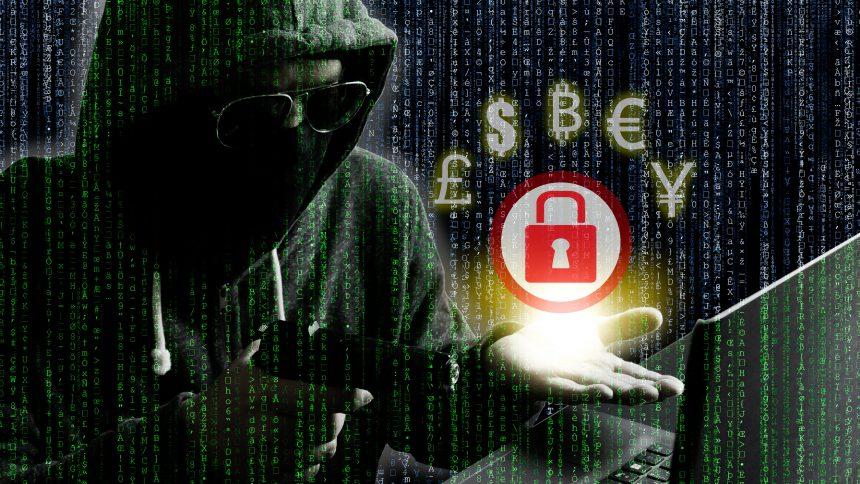Ransomware is a type of malicious software that encrypts files on a victim’s system and demands a ransom in exchange for the decryption key. Ransomware threats have been evolving and growing more sophisticated over time, and one such recent example is Defi ransomware. Like other forms of ransomware, Defi encrypts a victim’s files, rendering them inaccessible unless the user pays the ransom. Unfortunately, paying the ransom doesn’t guarantee data recovery, which makes it essential to take preventive measures.
In this article, we will discuss the Defi ransomware in detail, outlining its functionality, how it spreads, the consequences of infection, and how to remove it. We will also cover how users can protect their systems from future infections.
Defi Ransomware: How It Works
Defi ransomware is notorious for spreading via pirated software, infected email attachments, and compromised websites. Once installed on a victim’s system, it executes a series of commands designed to encrypt files and extort money from the user. The infection process typically begins when users unknowingly download and install software that has been bundled with the ransomware. This can occur through malicious websites, torrent downloads, or email attachments posing as legitimate files. After the ransomware is installed, it begins scanning the system for specific file types, such as documents, photos, videos, and databases, to encrypt.
Once the files are encrypted, Defi appends the “.defi” extension to the encrypted files. For example, a file named “document.txt” would become “document.txt.defi,” rendering it unreadable without the decryption key. The ransomware also deletes any shadow volume copies, making file recovery more difficult without paying the ransom.
Ransom Note and Extortion Demands
After encryption, Defi ransomware drops a ransom note named “_readme.txt” in every folder containing encrypted files. The note informs the victim that their files have been encrypted and provides instructions for paying the ransom. Victims are typically asked to pay a ransom of $490 if they act quickly, or $980 if they delay. The note often includes contact information (email addresses) for the attackers and payment methods, usually in cryptocurrency such as Bitcoin.
The ransom note aims to pressure victims by emphasizing that the only way to recover their files is by purchasing the decryption tool from the cybercriminals. However, it is important to remember that paying the ransom does not guarantee the recovery of your data. Cybercriminals may fail to deliver the decryption key or ask for additional payments, leaving victims stranded.
Purpose and Threat of Defi Ransomware
Ransomware like Defi serves one clear purpose: extorting money from victims. The attackers aim to cause as much disruption as possible by locking users out of their important files, knowing that victims may be willing to pay the ransom to regain access.
Once a system is infected, it faces severe consequences. Aside from losing access to critical data, infected systems may experience significant performance issues. Moreover, victims are left vulnerable to future attacks, as their willingness to pay might encourage cybercriminals to target them again.
Ransomware typically infiltrates systems through methods such as:
- Malicious email attachments: Often disguised as legitimate files, such as invoices or shipping notifications.
- Fake software downloads: Users may download ransomware while attempting to install pirated software or software from unverified sources.
- Exploit kits: Cybercriminals may exploit vulnerabilities in outdated software to deliver ransomware without user interaction.
Symptoms of Defi Ransomware Infection
If your computer is infected with Defi ransomware, you will notice several symptoms:
- Inability to open files, with their extensions changed to .defi.
- The appearance of ransom notes in folders containing encrypted files.
- Decreased system performance, as the ransomware encrypts files and modifies system settings.
- Disabled system restore points and deleted shadow volume copies, preventing easy recovery of files.
To confirm if you have Defi ransomware on your system, look for the following detection names:
- ESET: Win32/Filecoder.STOP
- Kaspersky: Trojan-Ransom.Win32.Stop.pfh
- Microsoft: Ransom:Win32/StopCrypt!ml
Similar Ransomware Threats
There are several other ransomware threats that function similarly to Defi, including:
- Dharma Ransomware: Known for using various extensions after encryption and demanding cryptocurrency payments.
- Phobos Ransomware: Another ransomware variant that encrypts files and appends the “.phobos” extension.
- ZEPPELIN Ransomware: Targets businesses and individual users, encrypting files and demanding payment for their recovery.
How to Remove Defi Ransomware: Step-by-Step Guide
Removing Defi ransomware requires a careful approach to ensure that all traces of the malware are eliminated. Below is a step-by-step guide for removing Defi ransomware from your system.
Step 1: Disconnect From the Internet
First, disconnect your computer from the internet to prevent further communication with the attackers’ servers and halt any ongoing encryption.
Step 2: Enter Safe Mode
To remove Defi ransomware safely, you will need to enter Safe Mode with Networking. Follow these steps:
- Restart your computer.
- As the computer boots, press the F8 key (or Shift + F8 on some systems) to bring up the Advanced Boot Options menu.
- Select Safe Mode with Networking and press Enter.
Step 3: Run an Anti-Malware Tool
Once in Safe Mode, use an anti-malware tool such as SpyHunter to scan your system for Defi ransomware. Follow these steps:
- Download and install SpyHunter (if you haven’t already).
- Run a full system scan to detect and remove Defi ransomware and any other associated malware.
- Follow the on-screen prompts to quarantine and delete infected files.
Step 4: Use a Decryption Tool (Optional)
If you do not wish to pay the ransom, you can try using a free decryption tool if one is available for Defi ransomware. Tools like STOP Djvu Decryptor may work, but their success depends on the variant of Defi and whether the decryption key is available.
Step 5: Restore Files from Backup
If you have backups of your files, now is the time to restore them. Ensure that the ransomware has been completely removed before restoring any files to prevent reinfection.
Preventing Future Infections
To avoid future ransomware infections like Defi, consider the following preventive measures:
- Keep your software and operating system updated to patch known vulnerabilities.
- Use reputable anti-malware software such as SpyHunter and perform regular system scans.
- Be cautious when opening email attachments or downloading files from the internet. Avoid downloading files from untrusted or suspicious sources.
- Regularly back up your data to an external drive or cloud storage to minimize the impact of a ransomware infection.
- Disable macros in email attachments to prevent automatic execution of malicious scripts.
Conclusion
Defi ransomware is a serious threat that encrypts your files and demands payment for their recovery. It spreads primarily through malicious email attachments and pirated software downloads, and its presence on your system can cause severe data loss. To protect yourself, follow the removal steps provided above and consider using SpyHunter to scan and secure your system.





